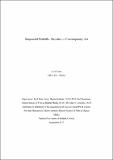| dc.description.abstract | This thesis considers a comedic trend in contemporary art that engages in a process of critical enquiry towards its own material structure and contextual frameworks. Certain contemporary artists employ a form of critical enquiry that is informed by, and structured through, a slapstick technique based on what recent comedy theorists such as John Morreall, Noël Carroll, and Mike W. Martin term Incongruity Theory. This theory suggests, as a basis for humour, that the viewer has an ironic distance from the object of consideration and an awareness of its context, an awareness of the incongruous act within a normative event. Artworks that feature the humorous, material disruption of slapstick express the content through a series of expositions and disruptions deployed by the artist and documented in the artwork. I propose that, in order for humorous artwork to launch a critical inquiry, it must make apparent to the viewer the physical and contextual material construction of the artwork. Slapstick, I will argue, is a route towards this reflexive material criticality.
Drawing on theories concerning art as a method of mimicking the sublime derived from Theodor W. Adorno and Jean-François Lyotard’s considerations of Immanuel Kant’s aesthetics, I suggest that critically engaged slapstick artwork does not resolve in a distinct meaning or content or declarative statement other than a consideration of the process of making and the reception of the object by the viewer. This lack of deterministic resolution distinguishes artworks that engage in similar media to mass entertainment such as moving image and still photography. Rather than a resolution predicated by mass entertainment, the artwork remains reflexively open-ended, suggesting humorous outcomes, while not depending on them. | en_IE |


